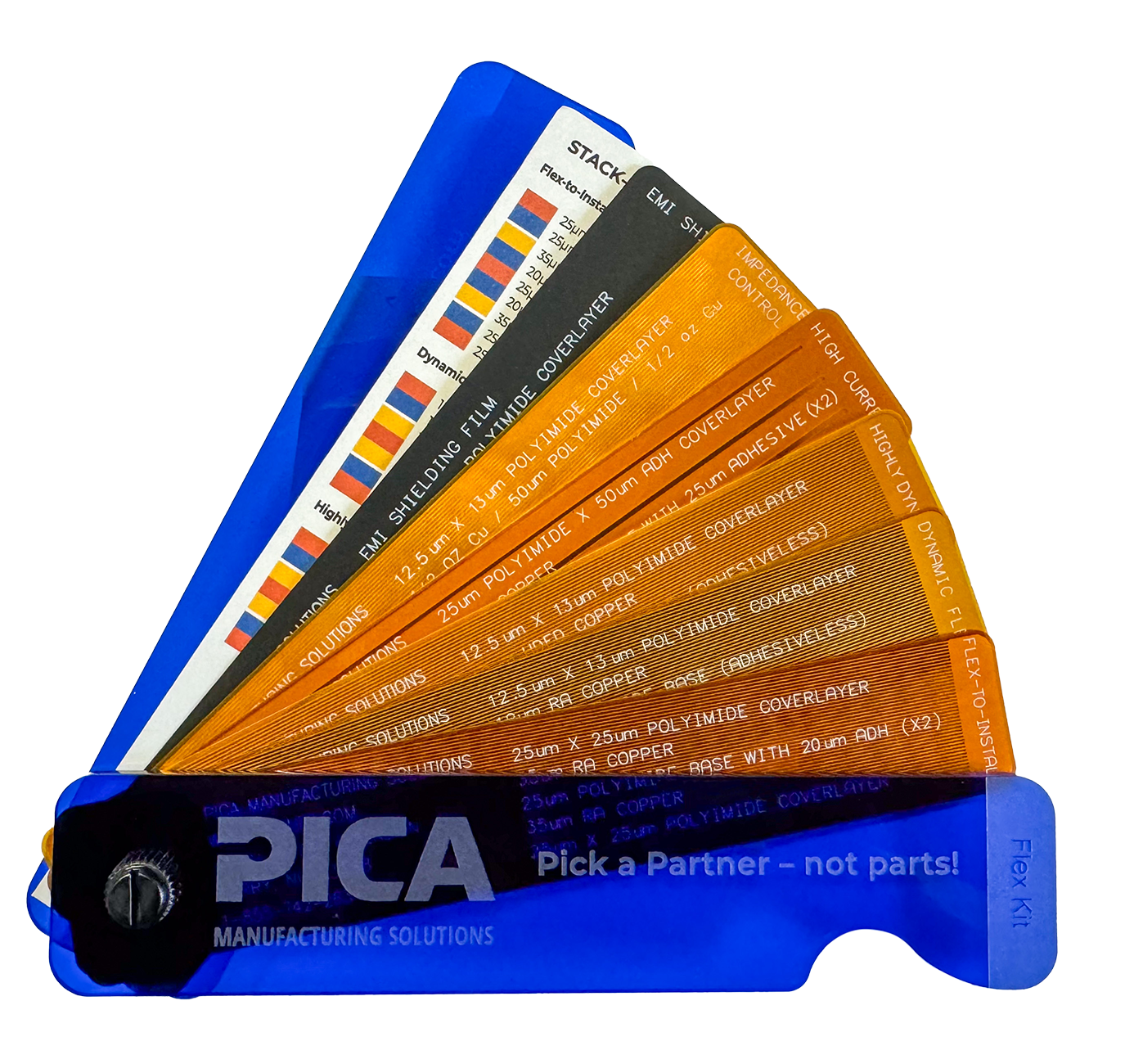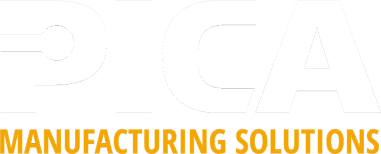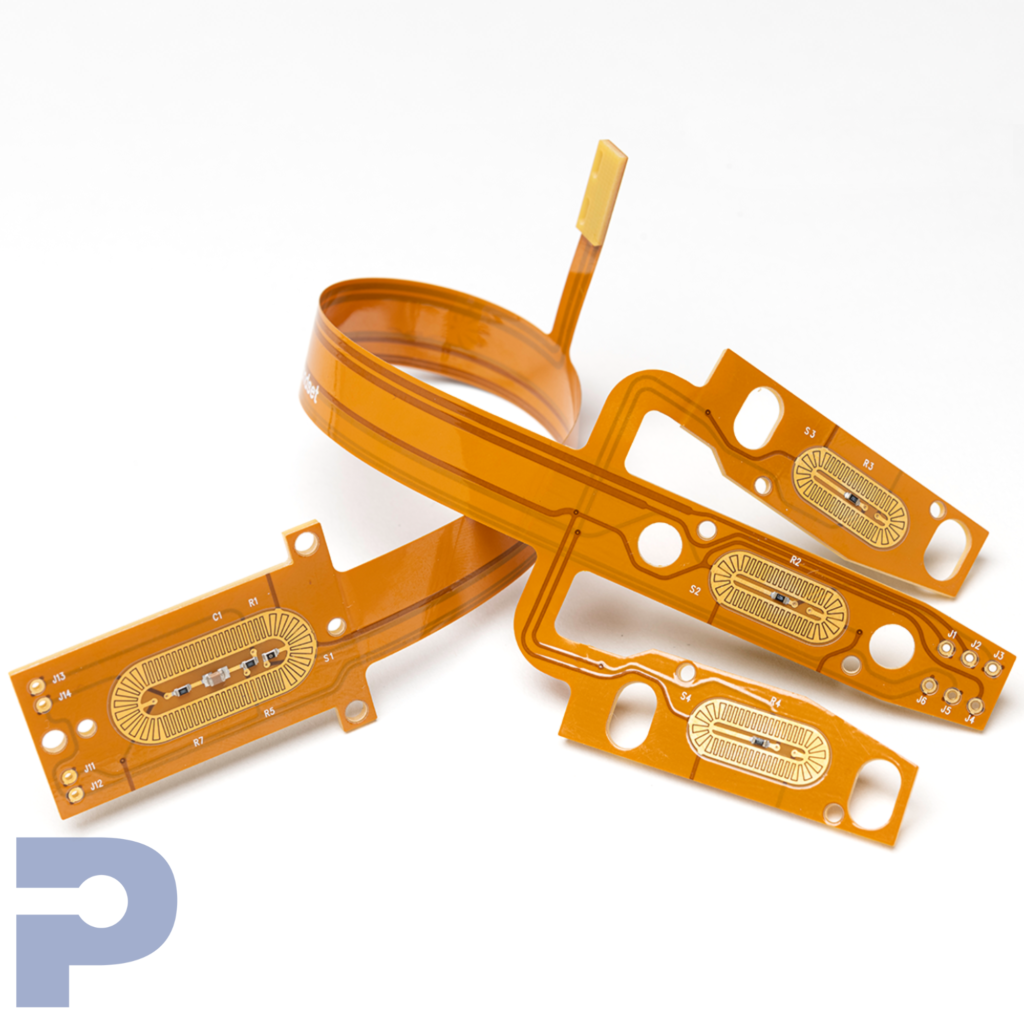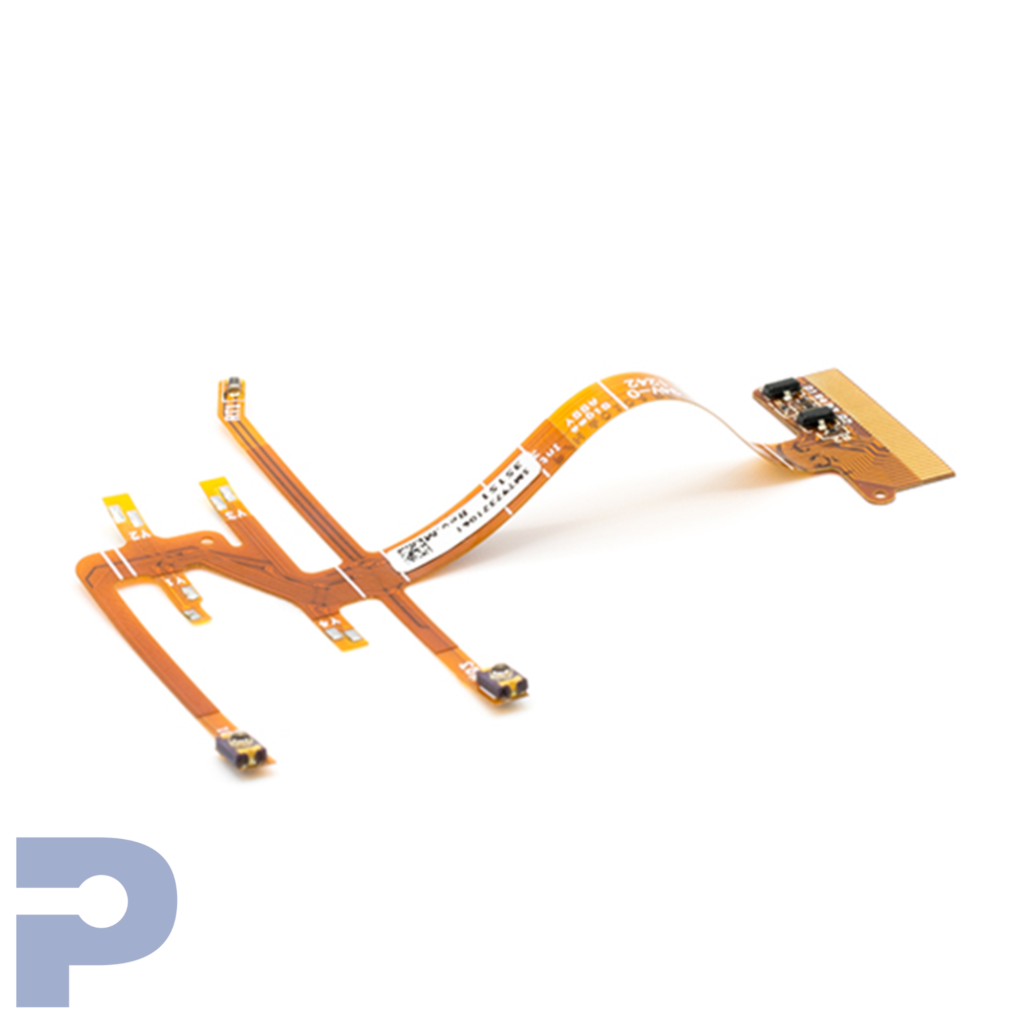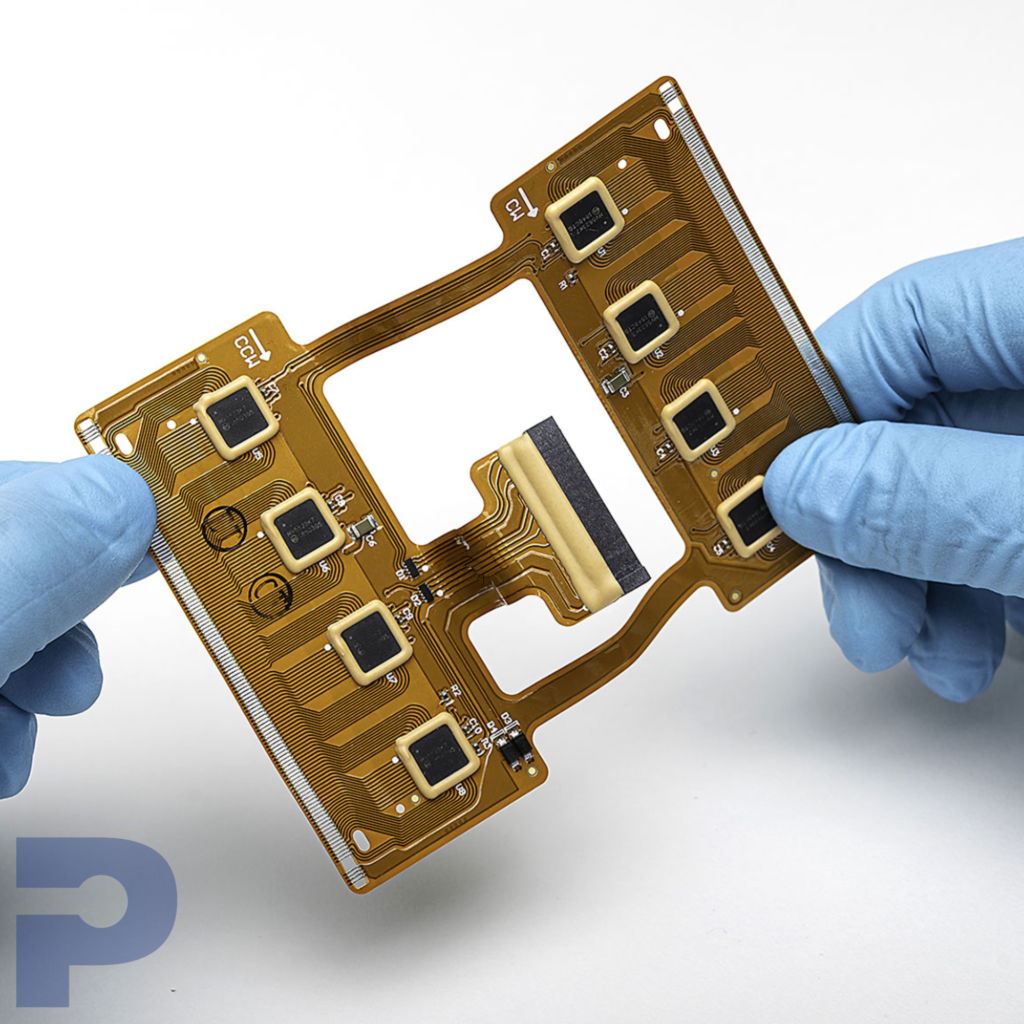Flexible Circuit Boards / Flex PCB:
Custom Flexible Circuit Boards Designed for Performance
PICA designs and manufactures Flexible Circuit Boards / Flex PCBs engineered for reliability, miniaturization, and high-performance applications. Built from advanced polyimide and polyester materials, our flex circuits bend, twist, and fold to fit the most compact or irregular spaces — without sacrificing durability.
With fast turnaround, expert DFM support, and global delivery, PICA helps design engineers push the limits of what’s possible in medical, automotive, defense, aerospace, industrial, and consumer electronics.
Why Choose Flexible Circuit Boards?
Space-Saving Design – Perfect for compact or irregular spaces, enabling thinner, lighter, and more efficient devices.
Enhanced Reliability – Fewer connectors and cables mean fewer failure points.
Superior Durability – Withstands vibration, shock, and repeated bending better than traditional rigid boards.
Lightweight Construction – Reduces overall system weight, critical for portable and aerospace applications.
Design Versatility – Supports three-dimensional configurations and creative layouts rigid boards can’t achieve.
Flexible PCB Capabilities - Highlights
PICA combines advanced materials and manufacturing techniques to support today’s most demanding designs:
Up to 40 rigid layers and 32 flex layers
2 mil (50 μm) trace/space for high-density designs
Controlled impedance with TDR testing & verification
Ultra-thin adhesiveless polyimide laminates
EMI shielding (Ag ink, copper plane, and EMI film)
High-frequency and high-power design options
For more technical information on PICA's Flexible Printed Circuit Board capabilities, click the button below.
Global Support, Fast Turnaround
With facilities in both the U.S. and Malaysia, PICA provides flexible circuit manufacturing with responsive engineering support, global logistics, and scalable production capacity. Whether you need prototypes, high-volume roll-to-roll production, or complex rigid-flex builds, our team delivers speed and reliability.
Benefits of Flexible Circuit Boards / Flex PCB
Space Efficiency
Flex circuits are uniquely suited for compact and irregular spaces, making it easy to optimize limited real estate within modern electronic devices. Their adaptability allows them to conform to unconventional shapes and configurations.
Reliability
By reducing the need for connectors and interconnect cables, flexible printed circuits minimize failure points and improve overall device reliability.
Durability
Engineered to withstand vibration, shock, and repeated bending, flexible PCBs are ideal for harsh operating environments where traditional rigid boards often fail.
Lightweight Design
The light construction of flex PCBs helps reduce overall device weight — a key advantage in portable electronics, aerospace, and wearables.
Design Freedom
Flexible PCBs enable true three-dimensional layouts. They can bend, fold, and twist, giving engineers more freedom to create innovative, space-saving designs not possible with rigid boards.
Markets We Serve with Flexible Circuit Boards / Flex PCBs
Consumer Electronics Market
Flexible PCBs are critical in smartphones, tablets, wearables, and other portable devices. Their thin, lightweight design enables compact layouts while improving durability and reliability in daily use.
Medical Market
From pacemakers and implants to hearing aids and diagnostic systems, PICA’s flex circuits deliver miniaturization, biocompatibility, and reliability for life-critical medical technologies.
Automotive Market
Our flex PCBs are engineered for control systems, sensors, lighting, and infotainment. Their vibration resistance and ability to conform to vehicle contours make them ideal for modern automotive electronics.
Industrial Market
In robotics, automation, and advanced sensors, flexible printed circuits provide space savings, rugged durability, and lightweight performance in demanding industrial environments.
Defense & Aerospace Market
Flex circuits are trusted in satellites, avionics, missiles, and defense electronics. Their durability under extreme stress, vibration, and temperature ensures mission-critical reliability.
The blogs featured below expand on this page’s content, offering detailed insights into specific design, manufacturing, and application topics that provide added relevance and deeper context for engineers and decision-makers.
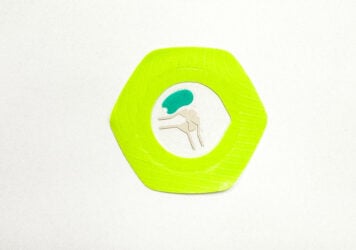
Biocompatible Substrates for Flex and Rigid PCBs
In the expanding world of medical devices, and wearables, the demand for biocompatible substrates...
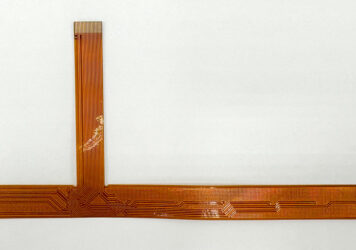
Advanced Trace Routing Techniques for Flexible PCBs: Boost Reliability and Performance
Designing a flexible PCB is not just about taking the layout practices from
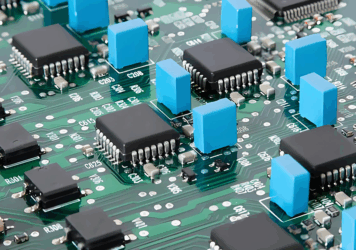
Mastering Thermal Management in PCB and Flex Circuit Design
As electronic devices become more compact and powerful, managing heat effectively is critical to ensuring performance, reliability, and long product...
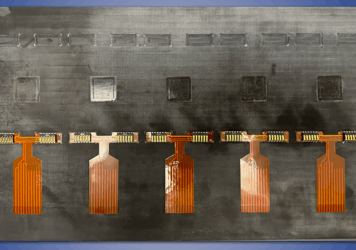
Step-by-Step Guide to the Flex Printed Circuit Board Assembly (FPCBA) Process
IntroductionAs electronics evolve to become thinner, lighter, and more complex, Flex Printed Circuit Boards (FPCBs) have emerged...
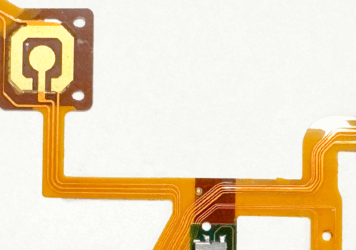
Designing for Precision: Controlled Impedance in Flexible Circuits
As electronic devices shrink and signal speeds increase, one design requirement becomes mission-critical: controlled impedance. This is...
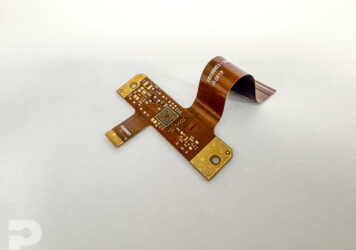
Bending Without Breaking: How Flexible Circuits Are Tested for Reliability
Flexible circuits are built to bend—but only when designed and tested to handle real-world mechanical demands. Whether...
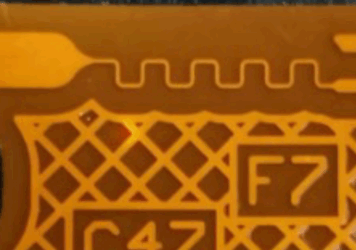
Embedding Performance: How Passive Components Are Integrated into Flexible Circuits
As electronic devices evolve to become smaller, smarter, and more power-efficient, engineers are under increasing pressure to maximize performance within...
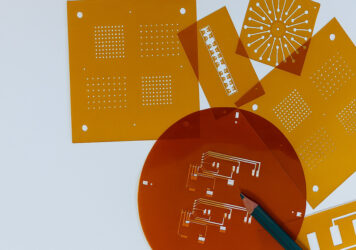
Kapton Etching in Flex Circuit Manufacturing: Processes, Materials, and Considerations
In the world of flexible electronics, polyimide films like Kapton® (a DuPont trademark) are a foundational material. Used in everything...
Request Your PICAKit Today
We want you to take a look at what we can produce for you by offering you a PICAKit which includes a variety of flexible pcb, shields, & flat flexible cables.
